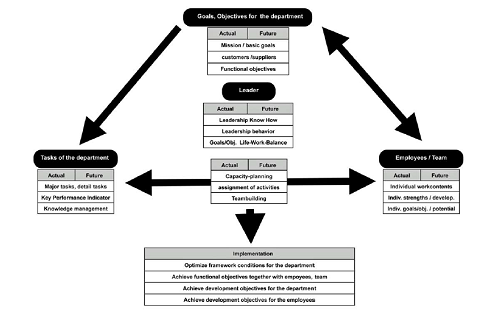ATD Blog
Manager Performance Map Helps Entire Team Succeed
Wed Feb 13 2013

Even well-meaning managers face a dilemma: Spend time and effort developing the capabilities of employees or concentrate those efforts on achieving business objectives and implementing strategy. The paradox is obvious: the only way an organizations can achieve its business goals is with highly skilled employees.
To complicate matters, especially managers in middle or lower management must deal with a whole host of additional challenges. Objectives become increasingly exacting due to pressures of cost, time, and quality. New technology requires a cycle of continuous learning. Employees expect higher involvement in business decisions, motivating work, and development opportunities. Flexible work options, such as telecommuting, can interfere with staff coverage on certain projects. The list goes on.
Indeed, managers must constantly address a plethora of issues:
How can I achieve goals and improvements with relatively few resources?
How can I arrange the full-time-equivalent even though I lack employees?
What exactly can I do, if requirements do not match with employees' skills?
How can I refloat modified work content and work processes?
How can I offer motivating work content and professional development?
How can I handle modified gateways to other departments?
How can I delegate better and still ensure that quality work is generated?
How can I create buy-in for new plans from business leaders and how can I involve my team?
So, what’s the solution? Managers need to be able to quickly and succinctly analyze business information in order to develop strategy and planning methods, as well as complete skill and task appraisals that will direct staff development so they can achieve the strategy.
Like any project management effort, a tool or system that can simulate alternative solutions and visualize implementation plans is necessary. Enter the Manager Performance Map (MPM).
MPM leads managers step-by-step through the analysis process—from the organization’s current state and needs to future designs for your improving your area of responsibility.
Derive operational objectives by analyzing the organization’s mission and the purpose of one's own area of responsibility in the company, as well as annual goal agreements.
Develop actual tasks with KPIs (Key Performance Indicators) based on the goals and objectives.
Detail the necessary areas of competencies and capabilities for each task.
Distribute the tasks effectively with motivation through capacity planning for employees and for yourself, and define working processes.
Consider the development interests and development potential of employees.
Cultivate development and education needs for the department and individuals.
Select the most suitable measures.
Direct the implementation through SMART objectives and project management.
This process with its interdependent steps can be extremely complex. It requires not only a high level of leadership and management competencies, but also an instrument that combines all required information. (see Figure 1).
Few leaders can get all steps fully under control without guidance and methodical assistance. An instrument like the MPM records essential information needed by managers to help them lead effectively and in a motivational manner, providing a foundation on which they can build.
The MPM contains approved Know-How: strategy development and breakdown methods, planning methods with matrices for capacity with KPIs, tasks and skills, potential appraisals and staffing, job descriptions, team development, or change management tools. Managers can quantifiably improve their results in four areas.
Achievement of targets
Strategic organization of the area of responsibility
Improved achievement of goals and objectives
Elimination of bottlenecks, improvement of customer orientation
Productivity
More effective processing of tasks with KPIs
Identification of skills requirements, optimization of training measures
Capacity planning, effective and motivational distribution of tasks
Results-oriented implementation of change processes
Staff motivation
Involvement of team in management process, cooperative leadership
Creation of developmental opportunities for employees in the area
Long-term improvements in team development, team building, loyalty, and trust
Simplified design of leadership processes
Self-management
A secure basis for leadership decision-making
Result-oriented delegation to relieve some of the burden of leadership
Reappraisal of life-work balance and appropriate action
Through a technology-based instrument, like the MPM, managers can enter data a single time and crosslink it against other input areas. By connecting information and processes, the MPM can uncover linkages between tasks and employee capabilities, and suggest concrete plans to direct work to meet organizational needs.
More important, an instrument like MPM increases management skills and ensures implementation success because management development is combined with team and organization development. In other words, managers succeed when the entire team succeeds.
